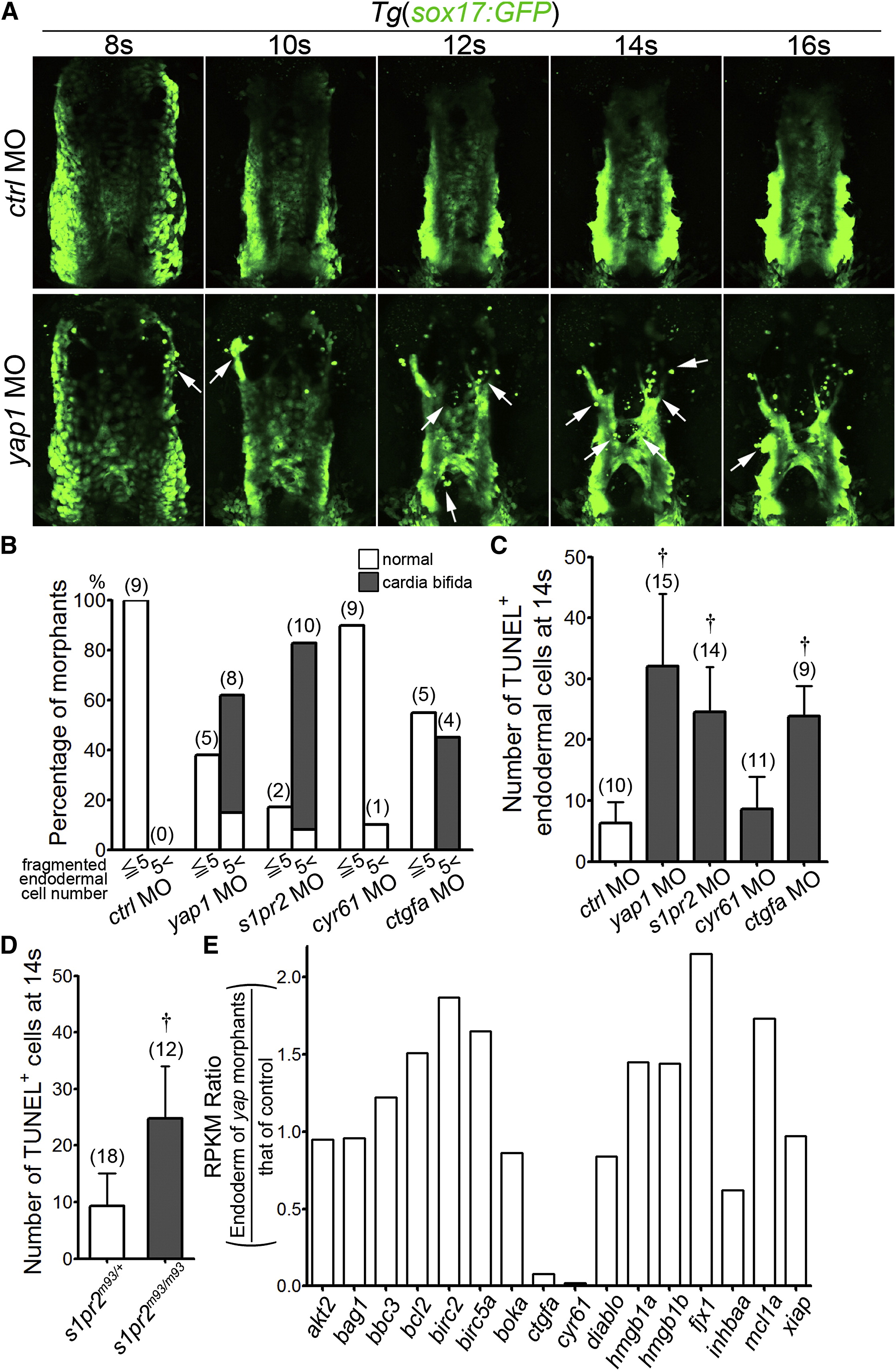Fig. 3
Yap1 Regulates Endodermal Cell Survival
(A) Time-sequential (from eight-somite stage [8s] to 16-somite stage [16s]) images of Tg(sox17:GFP) embryos injected with MO indicated at the left. Arrows denote the fragmentation of sox17 promoter-driven GFP-positive cells. A set of representative images of eight independent experiments is shown. Dorsal view.
(B) Incidence of cardia bifia (black) and normal heart (white) in the morphants exhibiting less than 5 fragmented endodermal cells or more than 5 fragmented endodermal cells in the embryos treated with the MO indicated at the bottom.
(C) Bar graph shows the number of the TUNEL-positive cells among the GFP-positive endodermal cells of Tg(sox17:GFP) embryos at 14-somite stage (14s) injected with MO indicated at the bottom. ctrl MO, control morpholino. ?p < 0.01 (versus ctrl morphants).
(D) Bar graph shows the number of the TUNEL-positive cells in a S1pr2 mutant (mil), heterozygous embryo (s1pr2m93/+) and homozygous embryos (s1pr2m93/m93). ?p < 0.01.
(E) Gene expression profile analyzed by RNA-seq using RNAs obtained from the Tg(sox17:GFP) embryos uninjected (control) and injected with yap1 MO by sorting of GFP-positive endodermal cells. The graph shows the ratio of the reads per kilobase per million reads (RPKM) of the yap1 morphants-derived RNAs divided by that of the control. Among the genes we analyzed, those regulating cell survival are listed.
See also Figure S3 and Movies S1, S2, and S3.
Reprinted from Developmental Cell, 31, Fukui, H., Terai, K., Nakajima, H., Chiba, A., Fukuhara, S., Mochizuki, N., S1P-Yap1 Signaling Regulates Endoderm Formation Required for Cardiac Precursor Cell Migration in Zebrafish, 128-136, Copyright (2014) with permission from Elsevier. Full text @ Dev. Cell

